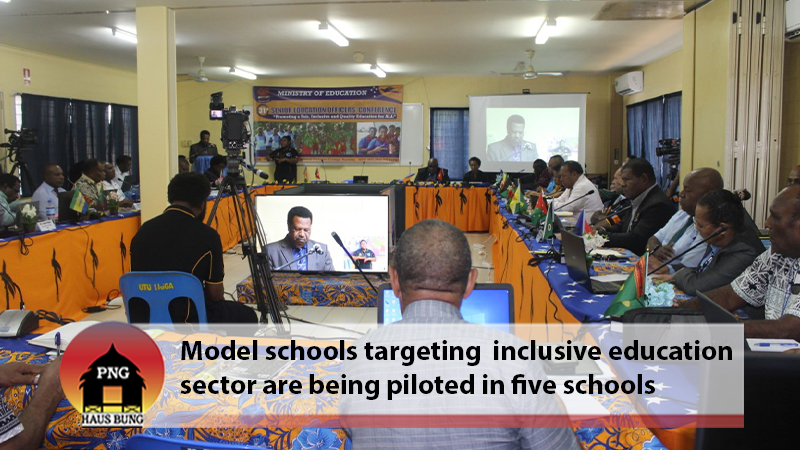
Building an Inclusive Future in Education
At Downeast School in Bangor, the preparations for the new school year are well underway. Crayon boxes and name plates sit on small desks, and signs displaying the alphabet line the walls. A banner in one classroom reads “All Are Welcome.” This message reflects the school’s commitment to fostering a welcoming environment for all students, including those with disabilities.
Principal Sarah Vickers shared that the school has been working for several years to better serve and include students with disabilities. This effort involves collaboration across departments, proactive strategies for managing negative behavior, and lesson planning that accommodates diverse learning needs. Vickers noted that many students receive special education services for most of their day, but with the right support systems in place, they have transitioned to less restrictive environments. This shift allows students to spend more time in general education settings with fewer supports than before, which Vickers called a significant success.
According to state data, about a third of the children at Downeast School require special education services. This year, the school is expanding its efforts as part of a five-year pilot program. The initiative, supported by federal funding from the Individuals with Disabilities Education Act (IDEA) and in partnership with the University of Maine at Farmington, aims to help teachers incorporate students with various needs into general classrooms. The program seeks to move away from the traditional silos that have separated students with disabilities.
The other two schools participating in the pilot are Turner and Leeds Central, both near Lewiston. The program addresses rising special education costs in Maine and aligns with shifting federal priorities. While the state Department of Education declined to provide specific cost details, the initiative is still in its early stages.
In 2022, roughly 56 percent of Maine special education students spent most of their day in general education classrooms — 10 percent below the national average. Since then, the inclusion rate has only increased by one percent. Nationally, around 15 percent of students need special education services, compared to 21 percent in Maine. Maine ranks second behind Puerto Rico in this statistic, tied with New York and Pennsylvania.
Disability rights advocates have long criticized the siloed approach to special education. Atlee Reilly of Disability Rights Maine emphasized that the goal of IDEA is to prepare students for life in the broader community through employment and further education. He argued that integrated settings are essential for real-world readiness.
Reducing Barriers Through Training and Collaboration
The pilot program provides leadership and teacher training, as well as assistance in restructuring schedules to allow more time for special education students in general classrooms. Tracy Whitlock, a special services coordinator, highlighted the importance of schools being invested in the work. The goal is to develop a model of inclusive education that other schools can adopt.
Kate MacLeod, an associate professor at the University of Maine at Farmington, is leading the professional development and data collection process. The first year will focus on leadership training, assessing current practices, and forming improvement plans. Years two through five will introduce training on inclusive practices such as Universal Design for Learning (UDL), which involves creating multiple access points for learning.
MacLeod explained that universally designed lessons might include different groups for reading, such as independent, audio, or teacher-led sessions. Students would also have multiple ways to engage with the material, such as writing summaries or sharing responses aloud. This approach reduces barriers for students from the start, minimizing the need for individualized support.
Every Student Benefits
The three participating schools hope that improved supports in general classrooms will reduce the number of students needing special education services. Some advocates point to challenges in identifying students early, leading to higher identification rates later. A recent report by the Maine Education Policy Research Institute found that challenging student behavior is a growing issue in schools.
Carrie Woodcock of the Maine Parent Federation noted that how schools address challenging behavior is linked to the siloed structure of special education. She said that students with behavioral issues are often removed from classrooms, while those with learning disabilities may be pulled out for too much specialized instruction. However, with inclusive teaching methods, students who struggle can find more success, and even those without disabilities may benefit.
Looking Ahead
Reilly of Disability Rights Maine acknowledged the pilot’s positive steps but emphasized the challenge of scaling it statewide. Financial incentives for schools to avoid segregated placements could encourage broader adoption. As special education costs rise, so do other school expenses, sparking debates over funding models.
Administrators have called for changes to the state’s school funding model, and some towns have pushed back against tax increases. Two bills aimed at increasing state funding for special education were introduced but did not pass. Researchers have suggested exploring alternative ways to calculate special education funding based on student needs.
MacLeod pointed out the high costs of sending students to segregated settings, including private schools that charge hundreds of dollars per day. Additionally, some students have faced controversial restraint and seclusion practices. A recent bill weakened previous rules on these practices.
Inclusive support, when implemented effectively, can make schools more resource-efficient. MacLeod noted that integrated teams of educators may reduce the need for additional staff. As the pilot program begins, she believes educators are eager for better approaches that benefit all learners.